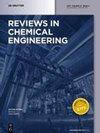Lithium–sulfur batteries beyond lithium-ion counterparts: reasonable substituting challenges, current research focus, binding critical role, and cathode designing
IF 4.9
3区 工程技术
Q1 ENGINEERING, CHEMICAL
引用次数: 0
Abstract
Despite concerns regarding safety, economics, and the environment, lithium-ion batteries (LIBs) are considerably utilized on account of their low energy density and capacity. Li–sulfur (Li–S) batteries have become a promising substitute for LIBs. Here, we first compared both systems in their cons and pros and analyzed the leading countries and companies in Li–S research are assessed through the utilization of an academic database. The scope of our research includes performance-enhancing design elements, cathode components, and binder materials. Synthetic and natural binders are trialed in an effort to enhance Li–S performance. Understanding the fundamental mechanisms enables the development of durable cathodes and binders. To overcome obstacles such as polysulfide adsorption, shuttle effect, and ion transport limitations, conducting polymers, metal/metal oxides, carbon-based compounds, MOFs, and Mxenes are investigated as potential cathode materials. In addition to pore characteristics and active polar sites, the efficacy of a battery is influenced by the anode surface geometry and heteroatom doping. Our review indicates that binders and sulfur/host composites must be meticulously chosen for Li–S battery cathode materials. This research advances energy storage technology by establishing the foundation for economically viable lithium–sulfur batteries with superior performance.超越锂离子电池的锂硫电池:合理替代的挑战、当前的研究重点、结合的关键作用以及正极设计
尽管锂离子电池(LIB)在安全性、经济性和环境方面备受关注,但由于其能量密度和容量较低,仍被大量使用。锂硫(Li-S)电池已成为锂离子电池的一种有前途的替代品。在此,我们首先比较了两种系统的优缺点,并通过学术数据库对锂硫电池研究领域的领先国家和公司进行了评估分析。我们的研究范围包括性能增强设计元素、阴极组件和粘合剂材料。我们试用了合成和天然粘合剂,以努力提高锂-S 性能。了解了基本机制,就能开发出耐用的阴极和粘结剂。为了克服多硫化物吸附、穿梭效应和离子传输限制等障碍,研究人员研究了导电聚合物、金属/金属氧化物、碳基化合物、MOFs 和二甲苯等潜在的阴极材料。除了孔隙特征和活性极性位点,电池的功效还受到阳极表面几何形状和杂原子掺杂的影响。我们的综述表明,锂-S 电池阴极材料必须精心选择粘合剂和硫/寄主复合材料。这项研究为性能优越、经济可行的锂硫电池奠定了基础,从而推动了储能技术的发展。
本文章由计算机程序翻译,如有差异,请以英文原文为准。
求助全文
约1分钟内获得全文
求助全文
来源期刊

Reviews in Chemical Engineering
工程技术-工程:化工
CiteScore
12.30
自引率
0.00%
发文量
37
审稿时长
6 months
期刊介绍:
Reviews in Chemical Engineering publishes authoritative review articles on all aspects of the broad field of chemical engineering and applied chemistry. Its aim is to develop new insights and understanding and to promote interest and research activity in chemical engineering, as well as the application of new developments in these areas. The bimonthly journal publishes peer-reviewed articles by leading chemical engineers, applied scientists and mathematicians. The broad interest today in solutions through chemistry to some of the world’s most challenging problems ensures that Reviews in Chemical Engineering will play a significant role in the growth of the field as a whole.
 求助内容:
求助内容: 应助结果提醒方式:
应助结果提醒方式:


